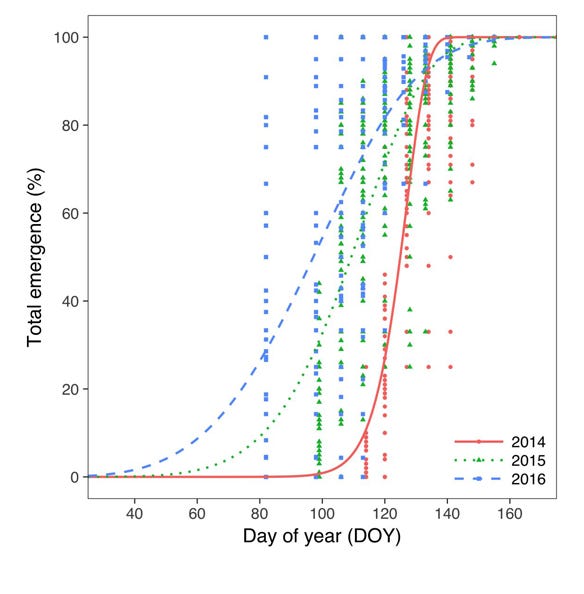February 23, 2018

Historically, tillage has played an important role in weed control. Tillage was traditionally used for winter and early-emerging summer annual weed control and seedbed preparation before planting. It has the additional benefit of increasing soil temperatures in the spring.
The widespread adoption of glyphosate-resistant crops and postemergence application of glyphosate allowed flexibility in application timing and reduced the cost of weed management. It also encouraged a shift toward chemical weed control, allowing producers to reduce tillage practice and implement minimum or no-till systems.
The soil health benefits and time saved in the spring also encouraged the popular adoption of no-till systems. However, the shift to no-till systems allowed winter annuals and early-emerging summer annuals to become more prevalent throughout the Midwest.
The widespread implementation of glyphosate-resistant corn-soybean cropping systems and subsequent overreliance on glyphosate resulted in the evolution of glyphosate-resistant weeds in Nebraska and several other states in the U.S. As of 2018, six weed species have been confirmed glyphosate-resistant in Nebraska: common ragweed, common waterhemp, giant ragweed, marestail, kochia, and Palmer amaranth. A diversified weed management plan is needed to control existing herbicide-resistant weeds and delay the evolution of resistant weeds.
Tillage is an important component of integrated weed management and can be used as a means of preplant control of early emerging weeds. Spring tillage can result in additional emergence or a change in the emergence pattern of some weeds. But before recommending tillage, it is important to identify the effect of tillage on weed emergence patterns.
To answer this question, University of Nebraska-Lincoln researchers conducted field studies to evaluate the effect of early-spring tillage on common ragweed emergence in a producer’s field near Adams, where glyphosate-resistant common ragweed was first confirmed.
Tillage timings included one, three, and six weeks after the first common ragweed emergence was observed in the field. Tillage was performed using a 20-inch-wide rototiller operated at a 4-inch depth.
Compared to no-till, early-spring tillage did not result in additional common ragweed emergence, and spring tillage did not affect the emergence period of common ragweed. What drove common ragweed emergence was soil temperature.
Early-season soil temperature was the lowest in 2014 and the highest in 2016, contributing to the different emergence periods among years (Figure 2). Common ragweed emerged in a relatively short period in this study. Common ragweed achieved 90% total emergence on May 13, 2014; May 13, 2015; and May 9, 2016.

TEMPERATURE-DRIVEN: Figure 2. Emergence period of common ragweed in a field study conducted in 2014-2016 near Adams. Tillage did not change the pattern of common ragweed emergence; however, common ragweed emergence was driven by soil temperature.

Tillage did not change the pattern of common ragweed emergence; however, common ragweed emergence was driven by soil temperature. The majority of common ragweed seedlings emerged before typical soybean planting dates. So, preplant tillage can be used in an integrated weed management program to reduce common ragweed competition in soybean. This will lessen the selection pressure placed on weeds by overuse of herbicide with the same mode of action, which leads to the evolution of herbicide resistant weeds.
This report comes from UNL CropWatch.
You May Also Like




